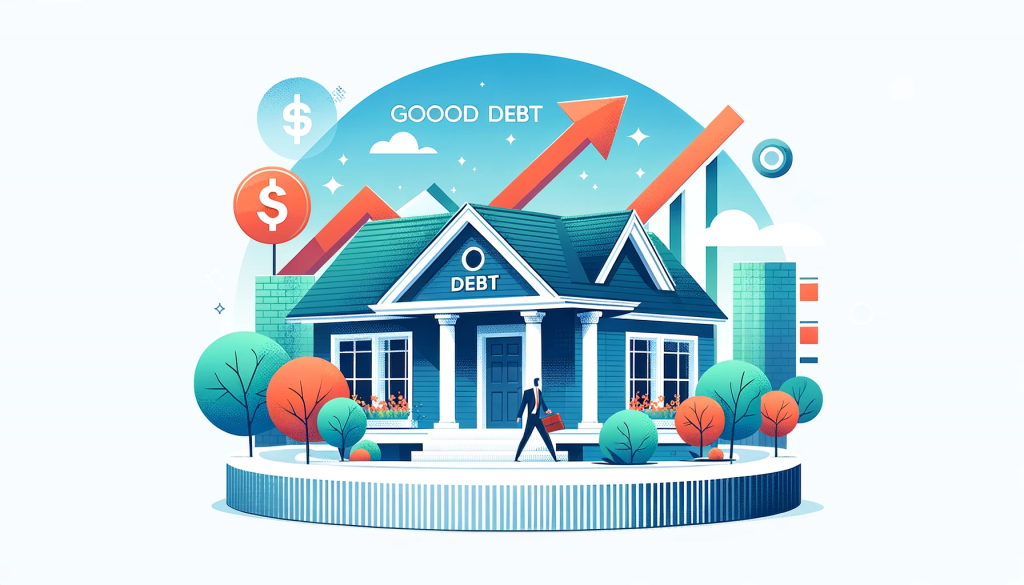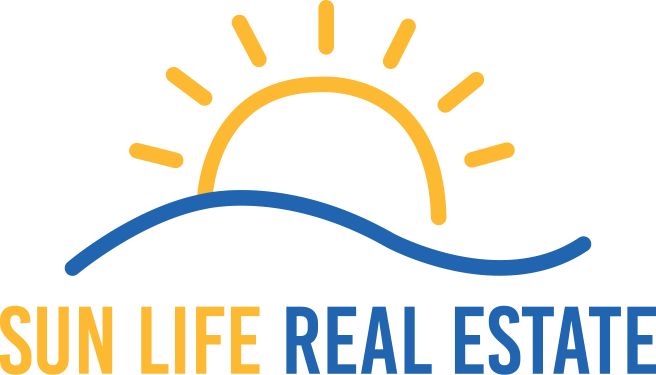Good Debt vs. Bad Debt in Real Estate: Key Strategies for Successful Investing

Debt – a word that often conjures images of financial burden and stress. However, in the realm of real estate investment, not all debt is created equal. Understanding the distinction between ‘good debt’ and ‘bad debt’ is crucial for anyone venturing into the property market.
The Essence of Good vs. Bad Debt
The concept of good debt revolves around financial obligations that, in the long run, generate more wealth or value than they cost. In real estate, this typically means loans taken for purchasing assets that appreciate over time or produce a steady income – like rental properties or commercial real estate.
On the other hand, bad debt refers to borrowing for assets that don’t increase in value or generate income. This could be a high-interest loan for a depreciating asset or spending on luxury items that offer no return on investment.
Real Estate: A Domain of Good Debt
In real estate investments, mortgages often fall into the category of good debt. When you buy a property, especially in a burgeoning market, the expectation is that its value will increase over time. Moreover, if you’re renting out the property, the rental income can cover your mortgage payments, potentially leading to profit.
However, it’s not just about buying any property. The key lies in making informed decisions – choosing the right property in the right location. A property in a declining area, even with a mortgage, can quickly turn from a good debt into a bad one if its value drops or it fails to generate expected rental income.
The Role of Financial Wisdom
Understanding the nuances of good and bad debt in real estate is a matter of financial wisdom. It’s about seeing beyond the immediate expense and evaluating the potential long-term benefits or drawbacks of a debt.
In the next sections, we’ll delve deeper into how good debt can positively impact your real estate investments and how to steer clear of bad debt, ensuring your financial decisions pave the way for a prosperous future in real estate.

The Impact of Good Debt on Real Estate Investment and Financial Growth
In the landscape of real estate investment, understanding the dynamics of good debt can be a game-changer. Let’s explore how smart leveraging of good debt can catapult your investments from mere acquisitions to substantial wealth generators.
Leveraging Good Debt to Amplify Growth
Good debt in real estate, particularly mortgage debt, is not just a financial obligation but a strategic tool. By acquiring a property through a mortgage, you effectively use a small portion of your own money (the down payment) to control a much larger asset. This leverage amplifies the potential for capital appreciation and rental income.
Managing Risk and Responsibility
While leveraging good debt has its advantages, it’s crucial to manage risks. This involves conducting thorough market research, choosing the right properties, and ensuring a steady cash flow to cover debt obligations. The golden rule is never to over-leverage; always maintain a buffer for market fluctuations and unexpected expenses.
The Tax Advantage
One of the lesser-discussed benefits of good debt in real estate is the tax advantage. Mortgage interest deductions can significantly reduce your taxable income, making your investment more profitable.
In conclusion, good debt, when used wisely, can be a powerful ally in real estate investment. It’s about making your money work for you, maximizing growth, and strategically building your property portfolio.

The Pitfalls of Bad Debt in Real Estate and How to Avoid Them
While good debt can be a ladder to financial growth in real estate, bad debt is the trapdoor that can plunge investors into financial distress. Understanding and avoiding bad debt is crucial for the health of your real estate portfolio.
Recognizing Bad Debt in Real Estate
Bad debt in real estate often comes in the form of high-interest loans used for purchasing properties that do not contribute to income generation or capital appreciation. This can include overpriced properties, properties in declining markets, or luxury homes that exceed investment needs.
The Lure and Risks of Overextension
A common form of bad debt arises from overextending finances to acquire properties. The allure of a seemingly lucrative deal can sometimes blind investors to the realities of high mortgage payments and maintenance costs, especially if the property does not generate adequate rental income or appreciate in value.
The Deceptive Shine of Luxury Investments
Luxury properties, while attractive, can also lead to bad debt if they don’t match your investment strategy. Their high costs, coupled with limited rental demand and significant upkeep expenses, can quickly turn a luxury property investment into a financial burden.
Avoiding the Bad Debt Trap
- Thorough Market Research: Always conduct comprehensive research on the property and its location. Understanding market trends and future prospects is key to making an informed decision.
- Realistic Financial Planning: Be realistic about your financial capabilities. Avoid over-leveraging and ensure that your investment does not strain your finances.
- Focus on Income Generation: Prioritize properties that have a strong potential for rental income and appreciation. Properties that can cover their own expenses and generate surplus income are generally safer investments.
- Seek Professional Advice: When in doubt, consulting with real estate experts and financial advisors can provide valuable insights and prevent costly mistakes.
In essence, avoiding bad debt in real estate is about making informed, strategic decisions that align with your financial goals and capabilities. By doing so, you can steer clear of financial pitfalls and pave a path to successful investing.

Strategies for Leveraging Good Debt Effectively in Real Estate
Smart leveraging of good debt is a cornerstone of successful real estate investing. It’s not just about taking on debt; it’s about doing so strategically to amplify your investment potential and grow your wealth.
1. Choosing the Right Properties
The first step in leveraging good debt is selecting the right properties. Look for properties in areas with strong growth potential, stable rental markets, and high demand. Properties in such areas are more likely to appreciate in value and generate consistent rental income.
2. Structuring Debt Wisely
Understanding different mortgage products and choosing the right one can significantly impact your investment’s success. Opt for mortgages with favorable terms, including interest rates and payment schedules that align with your investment strategy and cash flow.
3. Using Equity to Grow
As your properties appreciate in value, they build equity that can be tapped into for further investments. This is known as ‘equity recycling.’ You can leverage this equity to secure additional loans for new investments, thereby expanding your portfolio without necessarily injecting more personal funds.
4. Balancing Risk and Return
While leveraging increases potential returns, it also amplifies risks. It’s important to strike a balance. Ensure that your cash flow can comfortably cover your debt obligations, even in less favorable market conditions. This might mean having a lower loan-to-value ratio or setting aside reserves for unexpected expenses.
5. Continuous Market Analysis
The real estate market is dynamic, and successful investors keep their fingers on the pulse of market trends. Regularly review your portfolio and the market to make informed decisions about when to hold, sell, or acquire more properties.
6. Seeking Professional Advice
Consider consulting with financial advisors and real estate experts. Their insights can help you navigate the complexities of leveraging and make informed decisions that align with your long-term investment goals.
By leveraging good debt wisely, you can accelerate your journey towards real estate success, turning each investment into a stepping stone towards greater financial achievements.
In the journey of real estate investment, the understanding of good and bad debt is more than just financial literacy – it’s a strategic blueprint for success. The ability to discern and leverage good debt while avoiding the pitfalls of bad debt can set the stage for sustainable growth and long-term financial stability.
Ready to Invest Wisely in Curacao?
If you’re looking to make informed, profitable real estate investments in Curacao, guidance from experts is invaluable. Adriaan and Meibi Smit at Sun Life Real Estate are dedicated to helping you navigate the real estate market with ease. Their expertise can be the key to unlocking your investment potential.
Contact Adriaan Smit and Meibi Castillo:
For more information on how to make wise investments in Curacao, reach out to Adriaan Smit and Meibi Castillo. Contact them via email at info@sunlife.realty. They are ready to assist you in making decisions that align with your investment goals and pave the way for your financial prosperity.
Remember, each investment decision you make is a step towards your future. Choose wisely, leverage intelligently, and let your investments reflect not just your financial acumen but also your vision for the future.
Categorieën: News
Tags: bad debt, financial advise, financial advise curacao, good debt, how can I invest in curacao, invest, invest in curacao, investment posibilities curacao, real estate Curacao, real estate financial advice, real estate investing, real estate investment curacao
